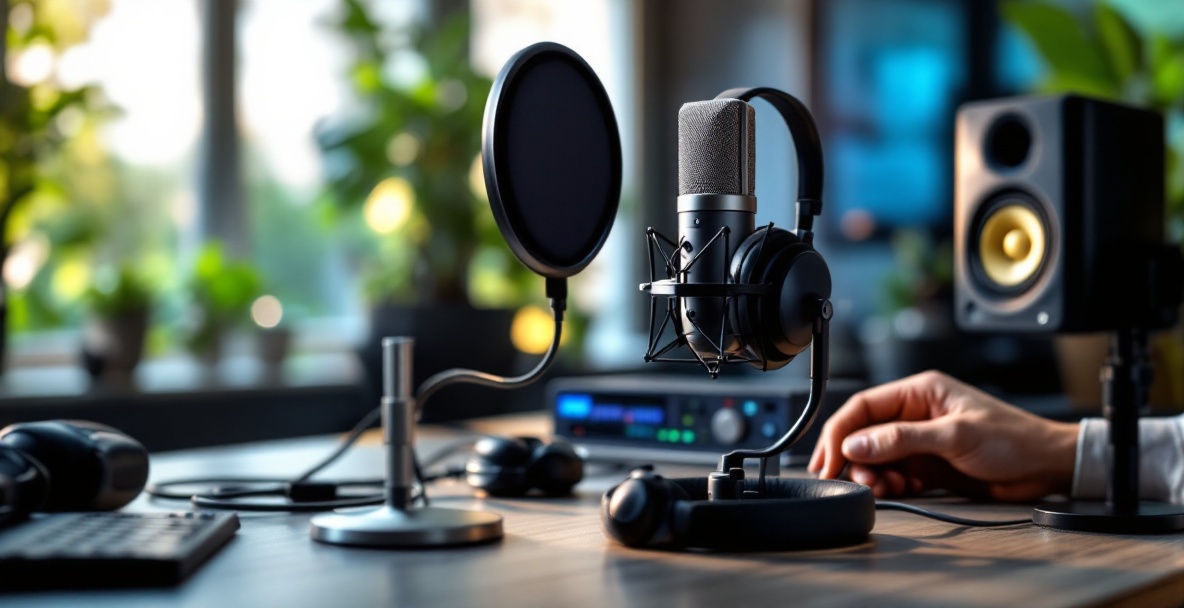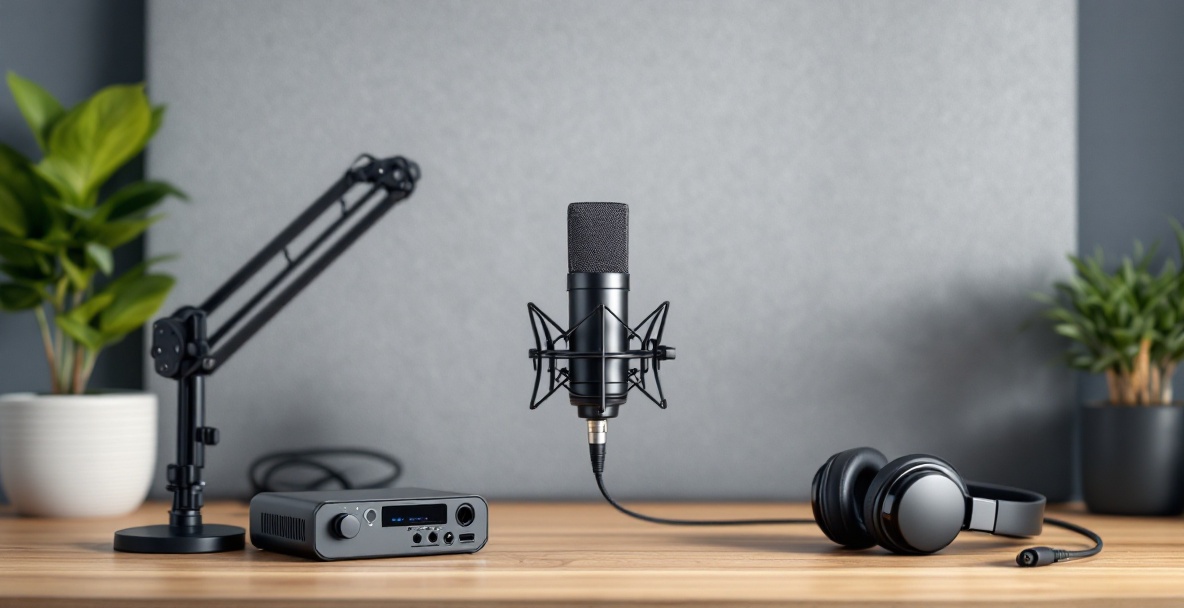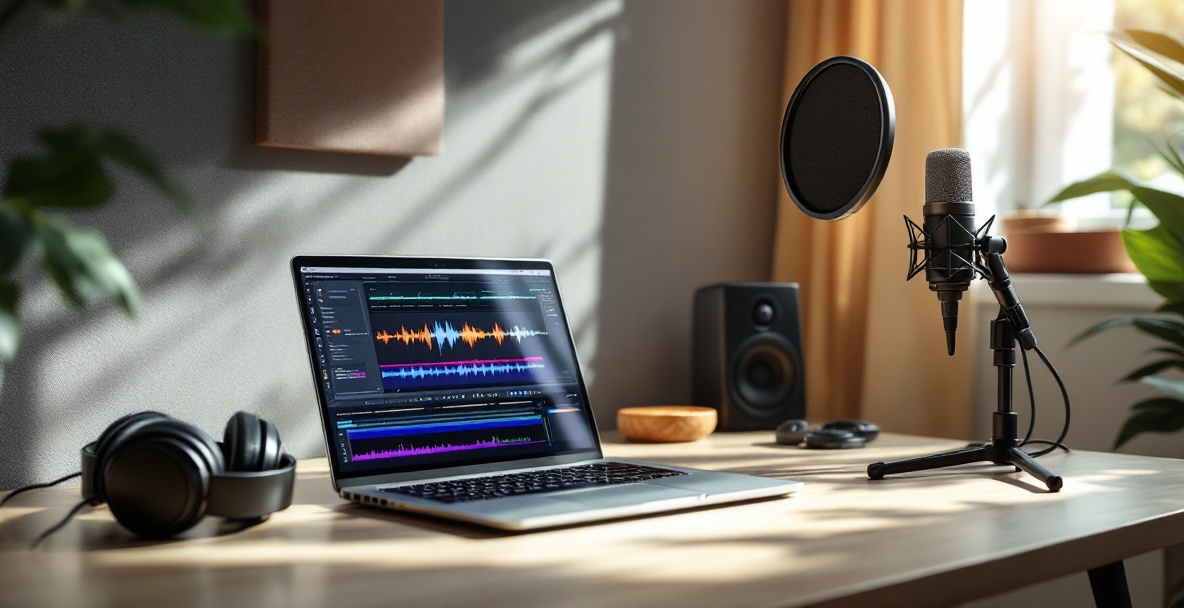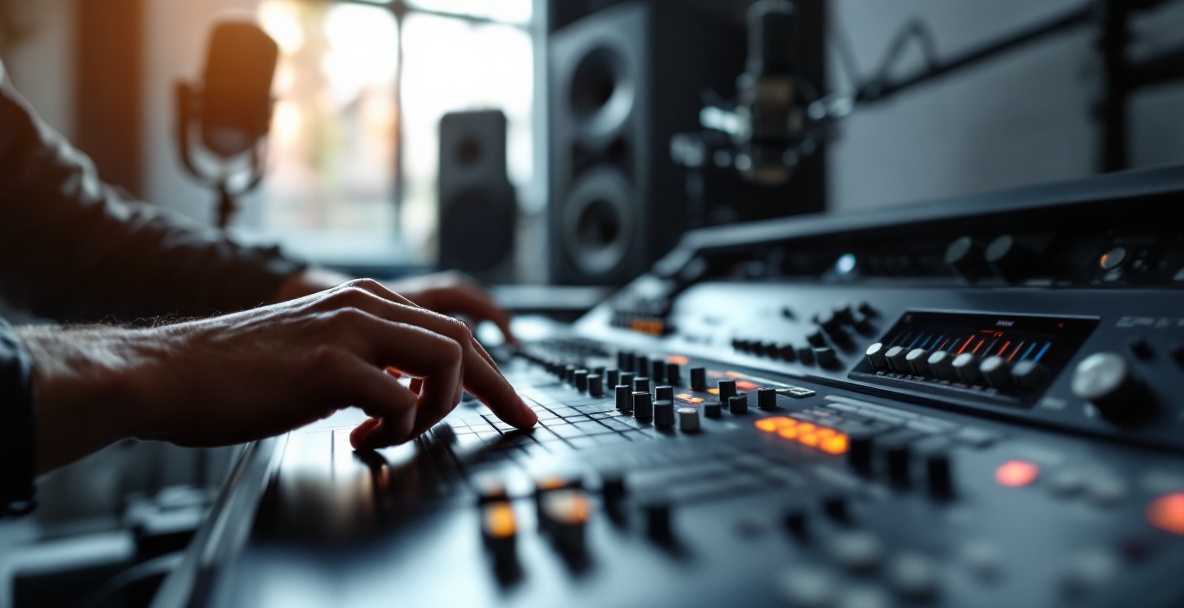When your podcast has clear, crisp sound, it instantly grabs attention. Bad audio makes it hard for your listeners to connect with your ideas. A smooth, clean recording lets your content shine and keeps your audience coming back for more. You don’t have to be a tech wizard to make your show sound better; a few smart changes can transform your entire experience.
Why Great Sound Matters to You

How Listeners Really Experience Your Podcast
Bad audio can block your message and push listeners away. When your audience struggles to understand every word because of background noise, they will quickly lose interest. Crystal-clear audio makes your podcast feel inviting and shows that you care about every detail.
Think back over your favorite shows. How many times did you switch channels because the sound was muffled or echo-filled? When your recording is clean, your story takes center stage and builds a genuine connection with those who tune in.
Making a Great First Impression
New listeners judge your podcast in just a few seconds based on how it sounds. A quick burst of high-quality audio tells them that you are serious about your work. In a crowded field of over two million shows, top-notch sound quality builds trust and invites listeners to stay.
A strong first impression sets the tone for your entire series. When the audio feels warm and professional, it tells your audience that what you share is worth their time. People are more likely to follow a podcast that sounds as professional as the ideas inside it.
Picking the Right Gear: The Basics

Picking a Good Mic
Your microphone is the heart of your setup. You don’t need to spend a fortune, but a decent mic makes a huge difference in telling your story clearly. Think about where you record and how much you can spend before you choose the perfect one.
For beginners, USB mics are simple plugs that give you professional sound quality right out of the box. Models like the Audio-Technica ATR2100x-USB or the Blue Yeti keep costs down while boosting your sound. If you’re ready for more, consider an XLR mic such as the Shure SM7B, but remember it comes with extra gear needs like an audio interface.
Pay close attention to the pickup pattern. Cardioid mics capture sound from the front, which is ideal if you record solo. Using an omnidirectional mic can work well for group chats since it picks up voices from all around.
Don’t Skip Quality Headphones
A lot of new podcasters overlook good headphones, even though they’re a must. They help you monitor your sound as you record and edit. Quality headphones let you catch small mistakes right away, protecting your overall sound.
When you use headphones during your session, you can notice issues like the wrong mic angle or sudden background noise. They also help you keep track of your volume and spot any pop or hiss while you’re speaking.
You don’t need the priciest models; mid-range options such as the Sony MDR-7506 or Audio-Technica ATH-M40x offer great, clear sound without extra bass or treble that might change your tone.
Getting Your Recording Space Right
Even the best microphone cannot fix a noisy room. Your recording space plays a big role in how clean your audio turns out. A quiet room with little echo sets you up for professional audio quality.
Hard surfaces often bounce sound around, causing echoes that muddy your words. Adding soft items like curtains, carpets, or even a few pieces of furniture can soak up unwanted noise. If you're on a budget, try recording in a closet full of clothes; it may surprisingly work well.
For a real upgrade, think about buying a few acoustic treatments. Panels, bass traps, or a reflection filter behind your mic can change a difficult room into a studio-quality space. Often, a small, treated room is much better than a large, echo-filled one.
Nailing Your Recording Technique
Using Your Mic Like a Pro
How you use your mic is just as important as the tool itself. Hold your mic about 4 to 6 inches from your mouth so that your voice is clear without getting too boomy. This simple practice can really boost your clear audio performance.
Keep a steady distance from the mic as you speak. If you lean in or back too much, your volume and tone can shift, making it hard for your listeners to follow along. A sturdy mic stand or boom arm can keep your mic fixed and steady during your show.
Also, watch out for those popping sounds from letters like P and B. Using a pop filter or even a DIY version, like a stretched nylon stocking, can help curb these noises. Try speaking slightly off-center to ease any harsh pops.
Keeping Unwanted Noise in Check
No matter how quiet things seem, background noise can sneak into your session. Sounds like air conditioner hums, computer fans, or even distant traffic can interrupt your flow. Take a few moments before you start to silence any distractions.
Record a short clip of silence at the start. This “room tone” helps you capture the background noise level, which you can later reduce during editing. Simple tools such as Audacity, Adobe Audition, or iZotope RX put noise reduction at your fingertips.
It’s always best to prevent noise rather than fix it later. While editing software can clean up some background sounds, it might change your voice’s natural texture. Spending a little extra time setting up your space right saves you from longer editing sessions and leads to a clean and professional finish.
Polishing Your Podcast for Maximum Impact

Fine-Tuning Your Recording
Editing is where a good recording turns into a great podcast. Start by cutting out mistakes, long pauses, and filler words to keep your message flowing naturally. Let your real voice and style shine through every cut, so the final product feels genuine.
Using equalization, or EQ, helps you adjust the different parts of your sound. A high-pass filter around 80-100Hz can remove low rumbles, while a small boost around 2-3kHz can help your voice sound clear. Reducing frequencies near 200-300Hz can also clear up muddiness, especially in deeper voices.
Compression brings balance to your recording by evening out the loud and soft parts. Begin with a mild setting, such as a 2:1 or 3:1 ratio, and adjust until the loud sections are a bit softer. This creates a smooth and balanced listening experience for your audience.
Sprinkling in Music and Effects
Music and sound effects can add real charm to your podcast. A catchy intro or outro sets the tone and marks transitions clearly for your listeners. Be sure you have the proper licenses when choosing your tracks to keep everything above board.
Sound effects should support your message instead of taking center stage. Use them sparingly to highlight important moments or to add a bit of mood. The focus should always remain on your voice and ideas, not on the effects.
When mixing your voice with background music, check that your speech is always clear. It helps to keep background music noticeably softer than your voice, usually 15-20dB lower. This simple trick makes sure your story is heard, not the music, and keeps your content engaging.
For more detailed guidance on audio engineering techniques specifically for podcasting, check out these professional podcasting tips and techniques.
Final Quality Checks and Tweaks

Test Your Podcast on Different Devices
Before you publish, take time to listen to your episode on a variety of devices. What sounds perfect in a studio might reveal a flaw on earbuds, in a car, or on a basic smartphone speaker. This simple test makes sure your audio stays clear and dynamic no matter where it’s heard.
Keep a close eye on your volume levels throughout the different playback modes. Your show should match the loudness of top-notch podcasts, so listeners do not have to keep adjusting their settings. A balanced volume creates a more enjoyable experience every time someone tunes in.
It is wise to ask a few trusted friends or colleagues to offer feedback. Fresh ears can spot issues you might have missed after long editing sessions. Their honest comments can help you polish your podcast until it matches professional standards.
Perfecting Your Final Mix
Your final mix is where all the pieces come together. Make sure every speaker is heard clearly without any jarring volume differences. A well-balanced mix allows your story to flow naturally and feels truly professional and inviting.
You can also refer to NTIA's guide on improving audio experiences for extra tips on maintaining consistent levels. Following this guide helps ensure that each speaker's voice shines through evenly.
Finally, export your mix in a format that balances quality with file size. Many podcasters use MP3 files at 128kbps (mono) or 256kbps (stereo) for the best result, although WAV files deliver higher quality at the cost of a larger file. Choose the option that fits your audience’s needs best.
Ways to Check Your Sound Quality
Try comparing your podcast to a well-known show in your genre. Listen to segments side by side and note any differences in warmth or clarity. This method can reveal areas where your production might improve.
Also, test your podcast while doing everyday tasks like washing dishes or driving. If you find it hard to catch every word or need to rewind often, your audio might need further adjustments. Enhanced sound quality is essential for keeping your listeners engaged and coming back for more.
Ready to Impress Your Listeners?
Making your podcast sound great is not just a technical fix; it is about clearing the path for your message to resonate. Use these tips to create a smooth, professional listening experience that draws your audience in each time you hit record. Every episode is a chance to refine your sound and share your ideas powerfully.
Take the Next Step
Now that you know how to boost your podcast’s audio, take a good look at your current setup. Identify what needs improvement fast, whether it is a better mic, a quieter room, or tighter editing. Focus on the changes that will give you the biggest payoff in sound quality and listener satisfaction.
Connect with Fellow Podcasters
You are not alone on this journey. Chat with other podcasters, share your wins and struggles, and learn new tricks to elevate your audio. The community thrives on sharing knowledge and support, and every bit of feedback can lead to even better shows.
Ready to take your podcast's sound quality and overall performance to the next level? Visit Castee today to discover how our end-to-end podcast marketing solution can help you leverage your improved audio quality to grow your audience, boost engagement, and track your success. With our specialized tools for podcasters, you'll not only sound professional but also expand your reach and build a thriving community around your content.
Leave a Reply